MAN AND NATURAL DISASTERS --- Wildfires; and vegetation decides to have a Bonfire.
Few months ago, I read Andre Epstein and Neda Monshat personal narration of how they survived a wildfire. According to them, in the middle of the night of that day, they were woken up by a bang on their door, and they were informed that wildfire was heading towards there home. Without wasting time, the packed up all there valuables and got ready to escape, then they were faced with a problem. They can't find there car key. According to them it took them more than 20 minutes before they found the car key, after which they took off with their car.
This article is spornsored by steadymechanic.com
For your car DIY related problems, check out this post: My Car Starts but Won’t Move When in Drive – (Causes & Solutions)
They have already lost so much time, the fire was already very close to them. The next 10 minutes were terrible. Imagine trying to drive through the fire, the risk was much. They could barely see what was in front of them. What if the car had exploded? Or the windsheild not being able to withstand such high temperature. Monshat got a brilliant idea of activating the windshield with the hope that the wiper fluid would help reduce the temperature of the windshield and thus preventing it from breaking at such high temperature.
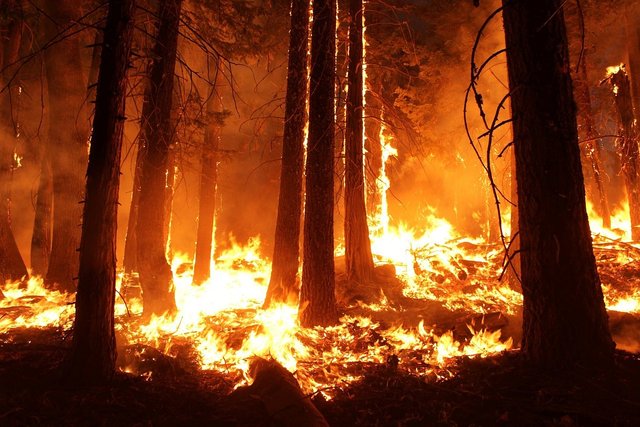
When I read this story, when I got to the part of them driving through the fire, I always imagine it as driving through hell. Just trying standing close to a burning refuse ain't easy, the kind of heat been radiated can even burn your skin. Now try to think of being caught by a wildfire, mehn!, don't even imagine it, it's terrible.
Today I will be writing on wildfires, what causes wildfire and what to do when a wildfire occurs. I really missed you guys. Am sorry, I had to take a break, am currently writing my fourth year exam, I wasn't easy to squeeze out this time to discuss with you guys, but I can't help it, I really missed our discussions. Be rest assured that today's discussion is surely going to be interesting, I promise you that.
WILDFIRES
Wildfires are unplanned fire outbreaks causes by natural or human activities, that usually occur in areas that are undeveloped and have large vegetation like in the rural areas.
Wildfires are referred to by so many names like brush fire, vegetation fire, desert fire, forest fire, grass fire, bush fire, hill fire e.t.c. We also have the veld fire. These names are based on the vegetation they occur, we might as well take them as the classifications of wildfire.
Another way of characterizing wildfires is by considering factors like, the flammability of the combustible material that is present, what causes the ignition, their physical properties, and the effect weather has on the fire.
CLASSIFICATION BASED ON SPREAD OF WILDFIRE
Wildfire doesn't just spread like that as oil does. The rate at which wildfire spreads depends on some factors and these factors includes the flammability of the vegetation, the moisture content, the weather conditions and the vertical arrangement of the wildfire.
What I mean by the flammability of the vegetation is the fuel type, vegetations burn at different rate. Some vegetations burn faster than the other. Based on the vegetation that supplies fuel to the wildfire we have the following.
a. Ground fires:- These kinds of fires are fuel by subterranean roots, and organic matter that are buried close to the surface of the earth. Ground fires burn really slow, and can keep burning for days and even up to months. Subterranean roots, organic matter and other sources of fuel for ground fire are most times ignited due to spotting.
b. Crawling or surface fires:- Just as the name implies, this kind of wildfires are not high since the vegetations that acts as fuel for it are low-lying vegetations found on the forest floors. These vegetations includes, grasses, low-lying shrubbery litter and debris. Surface fires spreads at a very slow rate without the help of slopes and wind, and it burns at a temperature of about 400•C.
c. Ladder fires are those wildfires that climb small trees, and other low level vegetations, their climb is always aided by invasive plants that wrap themselves round trees.
d. Crown fires:- As you guessed from the name, crown fires are wildfires that burn tall trees, and other stuffs that you can find at very high heights.
CAUSES OF WILDFIRE
Generally there are two causes of wildfire; natural and man-influenced causes.
a. Natural causes:- Natural causes include lightning, sparks as a result of rockfall, volcanic eruption and spontaneous combustion. Humans do not have control over these natural causes, they just happened on their own. Sometimes they are referred to as "hand of God".
b. Man-influenced causes; which ranges from discarding of lit cigarettes carelessly, sparks from working equipment, arson, throwing away of a burning match stick and any other way man generates fire.
It have been noted too that some wildfires were causes as a result of the contact of hot riffle bullet shells with a combustible vegetation. Another easily recognized man-influenced cause is bush burning, most wildfires resulted as a result of the bush burning without control.
THE FIRE TRIANGLE
There are 3 major elements that have to be in place for wildfires to occur. These 3 elements are the elements of a fire triangle, and they are
- A combustible material with low moisture content.
- An ignition source.
- The right supply of oxygen from the atmosphere.
The reason why wildfire is less common in dense forest is because of the high moisture content of the combustible materials caused by the high humidity in dense forest. For ignition to occur in such materials, high temperature is first needed to evaporate the moisture first before heating the material to its fire point.
From what we learnt from water cycle, we know that plants lose water to the atmosphere by evapotranspiration, but this water loss have to be balanced by an equivalent gain of water through the soils. Nature maintains this balance so as to prevent these plants from drying out. Dry plants are more flammable than wet plants, this is the reason why wildfires occur mostly during dry season.
HOW IT OCCURS
The wildfire front is the part of the wildfire that the combustible material meets first. It is the part of the wildfire that approaches the combustible material. As the wildfire approaches the vegetation, it heats it up even before it touches it by two modes of heat transfer; convection and radiation. This radiation heats up the wood and whatever moisture that is remaining in the vegetation evaporates at 100•C. As the wildfire comes more closer, the amount of heat received by the wood through radiation increases and the temperature increases up to 230•C, at this temperature, the wood starts releasing flammable gases and at 600•C and above the wood ignites.
Wildfires can spread really fast, advancing in all direction, once the source of fuel is so much in abundance, and it can cover more than 10.8km in just one hour when it occurs in the forest. While in grasslands it moves with a speed of 22km/hr.
INFLUENCE OF THE WEATHER ON WILDFIRE
Some climatic weather conditions like heat waves drought e.t.c, influence wildfires and most time they increase the risk of its occurrence. If we are to experience years with longer seasons of rain, which is then followed by warm periods, it would be observed that wildfire would occur and it would surely last for a long time.
Also global warming has made matters worst, drought is now a common occurrence in many areas, during drought vegetation are so dry, thus it ain't hard for wildfires to occur in such places.
Another thing worth noting is that wildfires occurs more in the daytime and it's rate of burning during those hours is up to five times than wildfire that occurs during the night. This is because of the lower humidity, increased wind speed and temperature that is observed during the day.
WILDFIRES AND PLANT ADAPTATION
Nature has a way of balancing everything, even though vegetation are prone to destruction, which accompanies wildfire, they have a way for surviving and adapting. Such adaptation and survival measures can be observed in plants that can withstand heat, other experience rapid growth after being destroyed by a fire event, while some in a bid to eliminate competition produce flammable materials that encourages fire propagation. Plants that produce flammable products to eliminate competition includes plants of the genus Eucalyptus which has oil that encourages fire and also very hard leaves which are able to resist heat and droughts. This enables it to get rid of other species feeding on it that are less fire-tolerant.
Trees that have dense barks, with high moisture content and lower branches can be able to withstand radiant heat from wildfire front, thus, that is their own adaptive features. Some seeds, shrubs and shoots can survive a wildfire. These fire-resistant seeds and shoots grow after a wild fire. Example, the Chamise deadwood litter is a shrub which has a very low water content and is highly flammable and it is known to sprout out again after a fire.
I guess right now you will be wondering how these seeds would manage to germinate on this land with all the carbon residue everywhere. Well, am pleased to tell you that smoke, heat and charred wood help in the germination of seeds. This process is known as serotiny. if you expose a growing seed or root to the smoke from a burning plant it enhances germination by encouraging the production of an organic compound known as orange butenolide. Others like cape lilies just simply lie dormant till when the flames of the fire removes the covering, after that, just in a night, it blossoms.
EFFECTS OF WILDFIRES
Wildfires have lots of effect, it has a great influence on the movement of air current. Due to the heat as a result of burning, the air close to the wildfire becomes warm, and since warm air are less dense than cold air, they rise up to the atmosphere. This movement causes a powerful updrafts, which can draw cooler air from the surrounding area which comes to replace the warm air rose up to the atmosphere.
Other effects caused by wildfire include, strong winds and fire whirls, which is due to the movement of the air current and weathering of rocks and boulders which is caused by heat.
Effects on the atmosphere
Wildfires causes air pollution, it increases the amount of particles in the lower stratosphere. The harm caused by wildfire is quite much, it doesn't just release carbon in the form of carbon dioxide in the atmosphere, the emissions of wildfire contains very small particles which causes cardiovascular and respiratory problems when breathed in into the body system. It also increases the concentration of the ozone up to an amount that is no longer safe.
HOW TO PREVENT WILDFIRES
As stated earlier, we can only prevent wildfires causes by human since we don't have power over natural factors. There are ways we can reduce the risk of fires occurrence and also put a hold on its spread.
These prevention techniques are aimed at managing air quality (since wildfire causes air pollution), maintaining balance in the ecosystem, protecting human and natural resources and also making sure that future wildfires are prevented.
Its worth noting that whenever prevention policies are to be set up, humans role in wildfires should be considered since three of every four wildfires are caused by humans. Since most of the wildfires are caused by humans, if we can kind a way of reducing human-caused ignitions, it would go a long way in reducing and preventing wildfires.
These prevention techniques include placing of no smoking signs close to combustible vegetations, prohibition of bush burning, making sure that you quench the light of a match stick or a cigarette properly before throwing it away. Always be at alert and keep sand and water close-by for quenching of fire before it gets out of control.
IMPORTANCE OF WILDFIRES
Even though wildfires leads to destruction of property and life, it still has a great role to play, not just in the ecosystem but also in testing of fuels.
Wildfires help in the growth of some species, thus, for this reason, sometimes the need arises to allow wildfires to burn, especially those of natural causes. Wildland fire use is a term used to describe any fire which is naturally caused, which is allows to burn, but it's burning is controlled.
Controlled burn refers to those fires that are started by government agencies during calculated weather conditions that won't allow the fire to spread uncontrollably.
Wildfires models find application (even. though there accuracy is low) when predicting and comparing the benefits of different fuel treatments. These values are also put to use when selecting the materials needed for building houses in places that are easily attacked by wildfires. Fire-resistant materials are better preferred for such structures, and flammable materials around the building should be cleared of up to a respectable distance.
Even though that there are so many ecological benefits that accompanies wildfire, their disadvantage is more overwhelming than the advantage. Thus, for the safety of buildings and human life, they need to be put to check.
DETECTION
Wildfires don't inform us before they occur, the only thing we can do if we fail in the attempt to prevent them from happening is to stop it at its early stage before any serious damage occurs. Early 20th century, fires observed through direct observation were reported by the use of telephones and carrier pigeons, but recently, it seems as if the old carrier pigeons didnt teach their children how to know the right direction to deliver a message sent through them.
We had to abandon this method, because, sometimes before these messages are relayed, so much harm has already been done by the fire. Thus, man had to develop a better means. (Don't mind me, I am just playing with you! But the truth is that, we really had to abandon that method, it wasn't efficiency).
Soon cameras were used instead in aerial and land photography till 1960 when infrared scanning came in vogue, yet we still had problem in relaying information about wildfires after detecting them. In 1988, a data station was established in West Yellowstone, it took it close to four hours to deliver satellite-based fire information.
Right now we make use of Detection systems and other patrol to monitor small, high risk areas. These detection systems make use of sensor networks which aid in detecting temperature, humidity and smoke, and with the results obtain in that send signals notifying us of a Wildfires.
For a more larger it is preferable to monitor such areas by the used of cameras fixed at scanning towers in addition to sensors (which should have the ability to detect smoke, brightness, color change and infrared signature of carbon dioxide produced by fires). This gives a more efficient result.
For a more wider coverage, the use of helicopters, UAVs can be used to monitor such areas. Satellite results are known to contain errors that ranges up to 1Km, and due to the cloud cover and the resolution of satellite imagery, it's effectiveness can be low sometimes.
Currently, a more efficient method is used. It involves the use of the Suomi NPP, which is a weather satellite that has a Visible Infrared Imaging Radiometer Suite(VIIRS) with the ability to observe the earth's surface more clearer than any ordinary satellite sensor. The result gotten by this satellite is feed into the Coen's model at the space of every twelve hours. This model is able to predict with great accuracy whether a fire would occur, the direction it's going to take and how long it would last.
Flickr: Satellite view captured by Suomi NPP
MAN AND WILDFIRES.
It doesn't really matter what caused the wildfire, It's end is always alarming and the consequences that folloelws it includes leaving trails of dead bodies behind it, in addition to loss of property. In this section, I will be listing out a few events regarded as the worst wildfires in human history.
These series of wildfires (about 400 in number) which occurred in Victoria, Australia, started on Feb 7 (which was on a Saturday, thus the name) and ended in March 14 2009. The causes of the wildfire were said to include, fall of power lines and drought. It was disastrous. At the end of the bushfire, when the smoke cleared up, the dead toll was 173 people, and the number of people injured in that incident was 414 people. Properties were lost. 1.1 million acres of land consumed, towns were destroyed. More than 3500 structures were destroyed leaving so many people homeless.
This second disaster was more devastating than the first. It happened in two states in the US, Wisconsin and Michigan in October 1871. The number of people that died as a result of the Peshtigo fire was more than 2000 persons, not to talk of those that were injured. Kristen! That's much!. The fire traveled so fast, jumping several miles over the Green Bay, laying towns to waste. It covered more than 3.7 million acres of land as it traveled. Do you remember the great Chicago fire? The Peshtigo fire happened in the same night. That day is a very sad day in human history.
This occurred in Jan 13, 1939 in Victoria, Australia, it killed up to 71 persons and destroyed more than 1000 homes and 69 sawmills. Causes of these bushfire was as a result of human carelessness with fire. You can see what a bit carelessness can cause. Three quarter of the state of Victoria, burnt to the ground, with its sources of income destroyed. The fire was very huge to the extent that the ashes reached New Zealand. The fire was finally quenched by the rain that fell on Jan 15.
The cause of this wildfire that occurred in Maine and also in the Canadian Province of New Brunswick is unknown, yet it's still regarded as one of the worst wildfires in human history since it is believed to have burnt up a fifth of Brunswick forest. It occurred in October of 1825, it destroyed so many houses and left 15000 people homeless. The Miramichi fire traveled really fast, leaving 3 million acres of land charred at its wake. We all the smoke cleared up the death toll was 160 people.
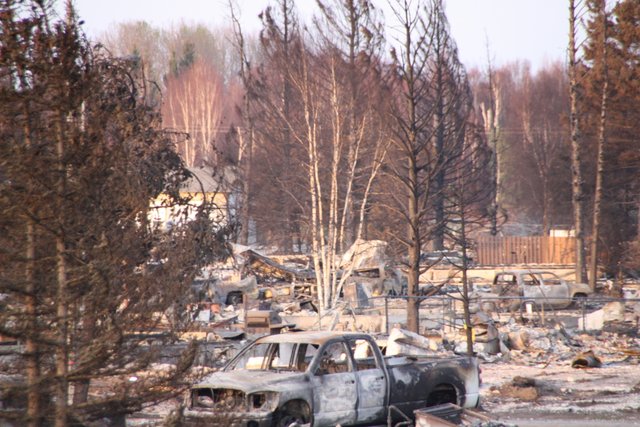
Picture by Mrsramsey - WikiCommons CC-BY SA 3.0.
Aftermath of a wildfire
HOW TO STAY ALIVE
Obeying these few rules can help you to survive a wildfire.
What to do before a wildfire.
Always make sure you always listen to the weather channel so as to always be updated on the weather condition and also to get the emergency instruction on what to do at that point. Always have a plan, If the emergency instruction say that you evacuate, make sure you have a place in mind to go. You might consider staying with a friend or family member till its over. Always be cautious of the unknown, make sure your car is fueled up and is in good condition. Always stock up an emergency supply in case there is a need for you to leave in a hurry.
Clean the gutters, cut the grasses and make sure that all flammable vegetations and combustible materials are 30 feet or more away from the house to avoid fire spreading through them to the house. If possible create fire breakers like driveways and gravel walkways, they are more preferable since fire can't spread through them. Make sure that water is within reach in any part of the house for quenching of fire in case it occurs. This can be achieved by filling garbage cans, and other large containers with water. Ensure you house, it's necessary for unforeseen circumstances like this, and always keep records of the content of your home.
During a wildfire
If you observe a fire outbreak, call the authorities, and then get yourself ready to evacuate at the shortest notice. When ordered to evacuate, leave immediately and always keep a member of your family or friend informed of your whereabouts at intervals till you arrive to your destination. If you were burnt by the wildfire, seeks help immediately. See to it that the burn is cooled down and the burns covered up. This is to prevent further injury or infection.
After a wildfire
Return to your house when the authority says it's safe to return. Check out for any sign of fire and quench it, so as to avoid another outbreak. Take a photograph of the damages caused to your property by the wildfire for insurance reasons. If you perceive smoke, quickly cover your noise and leave that place, to avoid inhaling dangerous particles. When it's safe to return, get back to your home and start cleaning it. Put on a dust mask when doing so to avoid inhaling dangerous particles. Any food that was exposed to the smoke or the soot should been thrown away. The might have become poisonous because of the smoke and soot from the wildfire. The same should be done to water exposed to these contamination. The should not be used for cooking, washing or even drinking.
CONCLUSION
On Tuesday I had a lengthy discussion with my friend Steve on wildfire. He is an undergraduate of Civil Engineering. We were trying to think to develop a method that can prevent wildfire completely. From our discussions and research we observed that even though wildfire has a lot of disadvantages, it has a very crucial in ecosystem, which is that it helps in the growth of some species of plant (of which I pointed out in this article). Which means that it is a necessary evil. This lead to so many follow up questions.
Even if we can find a way to prevent all human caused wildfires, what about the naturally caused ones? After so much brain storming, we decided that man should concentrate on preventing all man-caused wildfires and then think of a better way to control naturally caused ones, since we need wildfires to keep the ecosystem balanced. With that we parted ways.
Thinking about it now, I don't think man really have a say in controlling naturally caused wildfires since he doesn't know for certainty when it is to occur and how to make vegetations less combustible or reduce the supply of oxygen in those areas, factors which promote wildfire. Thus, it would be better if man attacks this problem by thinking of a better way to make his structures less susceptible to fire, in such a way that even if he is trapped in it by a wildfire, he won't be consumed.
Technology is growing to the stage that practically almost everything man can imagine is possible. Houses that doesn't allow the propagation of fires can be built. Few modifications can be done in the current procedure of building of houses. Instead of using PVC (which propagates fire) for the ceiling of the house, Civil Engineers should consider using POP instead. In place of wooden door, let metal doors be used instead, and let all paints used for the finishing of the building be made from a fire repellent substance, and smoke sensors connected to water supply placed in every corner of the house. If we allow our mind to dwell in this possibility, I believe that man won't need to run from wildfire anymore.
REFERENCES
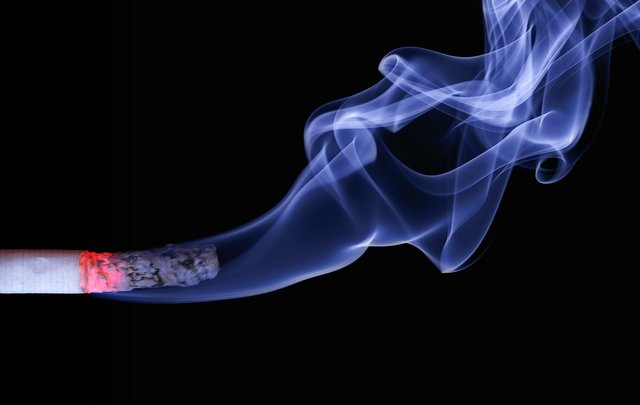

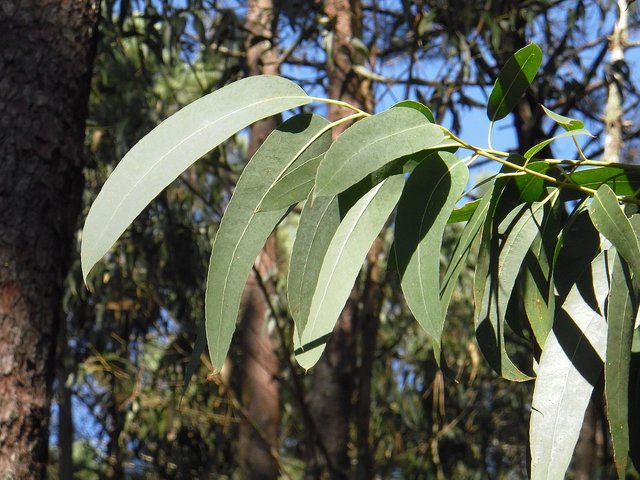
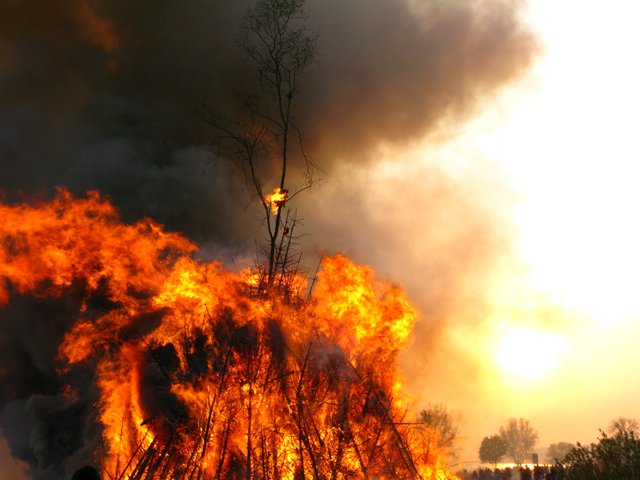

In Greece companies used to instigate wildfires on purpose so as to clear protected land for developments.
You have a minor grammatical mistake in the following sentence:
It should be their own instead of there own.Lol, these are all over this article, you only caught one?
Ah! Surely a typographical error. I have corrected it. Thank you.
Interesting one @whileponderin
Well, these wilfires are really disastrous. No matter whether it happens naturally or by humans. Some time its due to govt. or some time it happens mistakenly by humans. It may be good for the ecosystem, though what I have seen is really not at all good for the species living near by. All the crawling animals, birds etc have to leave their homes or sometime they also get into it. So, its really an issue to think on!
This is one of the phenomenons in nature that gets me confused whenever I ponder on them. @Vinamra. The disadvantage is quite alarming. It reduces it's advantage to nothing. If only man can think of a solution to balance all these.
Men are really helpless to this vast natural disasters..!
Wildfire may not cause death of millions still it is no less than a death to watch ur dreams burnt down to ashes...!!!
And about tht 'Suomi NPP' ..!
that is a really powerful weather satellite..! It can detect the movement of ice and changes in land-form too..! 💪
Really a well written article..!
Best regards..! 🙌
I know that there is no way by which a man looses his fortune that is preferable, but loosing everything you have to fire is the height of it. It takes only strong will for someone who lost all to stand back to his feet. Thank you very much @Christinaa, am glad you found this article educational.
xactly..!
Keep the good work going..! 👌